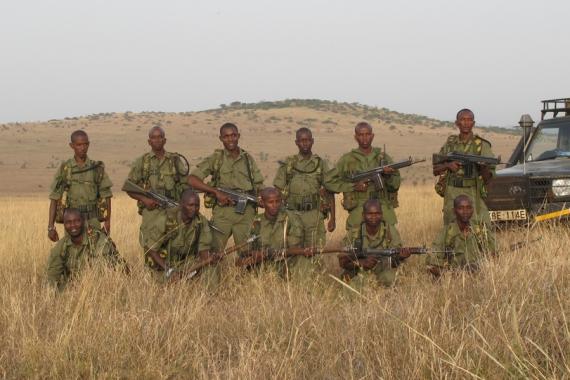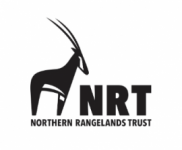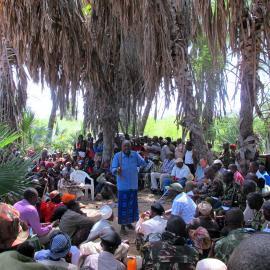Northern Rangelands Trust
Published

NRT Rapid Reaction Team. Credit: NRT
Historically, local communities had little say in how conservation areas in Kenya are managed, and saw little tangible benefit from wildlife protection. As a result, attitudes towards wildlife from the very people that lived alongside it were apathetic. The community conservation movement is changing this, by bridging the gap between conservation and improved livelihoods.
The Northern Rangelands Trust (NRT) was started in 2004 and is a membership organisation owned and led by 39 community conservancies in northern and coastal Kenya, covering over 40,000 km2. The purpose of NRT is to help build and develop community conservancies in order to enhance livelihoods, build peace and promote wildlife conservation.
The poaching and wildlife trade problem
Species affected Green Sea Turtle Chelonia mydas , Hawksbill Turtle Eretmochelys imbricate , African Elephant Loxodonta africana , Black Rhino Diceros bicornis
Products in tradeIvory, rhino horn, turtle shells
Overview of the problem
Poaching of elephants for ivory reached a peak in 2012 with over 100 elephants poached in Kenya. Now, in the community conservancies the number of poaching incidents has been reduced to zero. However, there are a rising number of elephant deaths in retaliation to human-wildlife conflict. To address this, NRT are working with the communities to explore mitigation solutions in conflict hotspots.
The anti-IWT initiative
Community conservancies are proving increasingly effective as partners in the fight against ivory poachers in Kenya. Much of the area covered by the community conservancies is critical habitat for elephants.
The reason they are effective in conservation is linked to the broader benefits the conservancies bring to local communities. In essence, these well governed, community-owned and autonomous institutions are set up with the aim of improving social wellbeing, land management and wildlife conservation.
Conservancies represent constituent communities who own a defined area of community land, either
legally or traditionally. Collectively, the landowners ensure the rights and responsibilities of conservation and share the benefits from conservation among the community.
NRT is tasked by community leaders to support indigenous communities in their own objectives to:
- Cooperatively develop locally-led governance structures that complement traditional, indigenous systems
- Run peace and security programmes
- Take the lead in natural environment management
- Manage sustainable businesses linked to conservation
As well as directly involving communities in anti-poaching operations, NRT established the Conservancy Livelihoods Fund (CLF) in 2015 to enable conservation activities to have more direct, tangible livelihoods benefits to community conservancy members. Projects link livelihood impacts to wildlife conservation and to take over USD $3 million has been provided for projects across member conservancies.
Inclusion of gender, age and ethnic groups
In 2019, NRT resourced a strategic focus on gender mainstreaming. In 2020 they worked with all conservancies to understand where gender gaps exist, with the aim to promote culturally appropriate solutions for all conservancy members to benefit from conservation and livelihood activities. This produced a gender action plan (2019-2021) outlining how NRT and the member conservancies can support IPLCs to achieve gender equality.
The strategy
Strengthening disincentives for illegal behaviour
The conservancies’ approach to tackling elephant poaching is multi-faceted, including community rangers, mobile rapid-response teams, intelligence gathering and social pressure.
The network of over 800 community conservancy rangers monitor and survey wildlife across their conservancies during daily patrols. All are in direct radio contact with national law enforcement authorities.
Conservancies maintain a local informer network which complements the KWS intelligence system. Increased NRT investment is making intelligence gathering more formal and strategic.
Not least of the conservancies’ roles is applying social pressure to expose and shame criminals. Customary punishments, such as cursing individuals, still carry weight in traditional communities.
Increasing incentives for wildlife stewardship
Revenue from tourism was over US$1.3 million in 2019. This was reduced by over half in 2020 due to the Covid-19 pandemic, with NRT partners trying to fill the gap left.
NRT’s has a bespoke Leadership and Management Programme (LAMP) for Indigenous People and Local Communities (IPLCs) to equip and empower them to exercise their human rights to manage their land, conserve the environment and secure their livelihoods. All NRT member conservancy boards and committee members can take part.
Decreasing the costs of living with wildlife
NRT are exploring fencing options at critical grazing, water and settlement conflict hotspots to mitigate human-elephant conflict.
Increasing livelihoods that are not related to wildlife
NRT Trading (NRTT) is a business accelerator for social and conservation impact enterprises, established to develop sustainable and resilient commerce across the member conservancies, at all levels of the social spectrum. Activities include BeadWORKS, which is a handicraft business, and Livestock-To-Markets, which aims to improve pastoralists income.
NRT have supported community-level development projects, such as water programme in 2019, building on almost a decade of investment in water development in member conservancies.
They’ve also addressed gaps in health care provision in the landscape by building clinics and built education facilities.
Improving education and awareness
Further detailIn 2019, the Education Programme supported 12 schools with training, infrastructure, field trips and bursaries, benefiting around 3,000 students. A radio education project was launched in 2020 as schools were closed due to the Covid-19 pandemic, reaching as many as 8,000 students.
Has the initiative made a difference?
Wildlife
The NRT model has managed to reduce elephant poaching to zero in 2020, from a high of 103 in 2012. Unfortunately, cases of human-elephant conflict are on the rise, and this will be a key focus of NRT’s wildlife strategy in the coming years. Incidents of turtle poaching on the coast have also decreased and at Sera Rhino Sanctuary, there has been zero poaching of black rhino incidents since its inception in 2015.
There are reports of increasing populations of elephant, reticulated giraffe, Grevy’s zebra and Beisa oryx.
Communities
Specific results include
- Employment of over 1,300 permanent staff plus thousands of temporary jobs created each year
- Over 600 people have taken part in LAMP since 2016
- Over US$1 million provided in funding for community enterprises
- The CLF has provided more than US$3.4 million for over 100 projects in member conservancies, benefitting around 70,000 people
- BeadWORKS artisans earned over US$90,000 in 2020, employing 1,250 women in 9 conservancies
- Educational and health infrastructure built
- Community owned tourism initiatives built or repaired
In partnership with The Nature Conservancy (TNC), NRT developed a tool called Social-CoMMS is a to monitor the socioeconomic status of conservancy communities and measure the social impact of conservancy and NRT programme activities.
In 2020 the data from nearly 2,500 households in 8 conservancies had been analysed, with results including:
- 6% employed by the conservancies
- 51% indicated their incomes have increased over the last three years
- 70% of households affected by human-wildlife conflict
- 58% believe the benefits of wildlife outweigh the cost and 85% believe wildlife is important to their future
- 19% received education bursaries from the conservancies in the last five years
- 56% indicated that their general wellbeing has improved in the last five years
What works and why
In more general terms, community conservancies have become highly effective and respected institutions bringing tangible benefits to the people they represent, as well as a significant force in countering illegal wildlife trade.
The inclusive nature of conservancies is key to their influence and success. They do not set up boundaries between people and wildlife, nor do they exclude other people from using the land.
Inherent in their structure and organisation is the capacity to resolve local issues, and ensure that the outcome is upheld.
Kenya is a highly supportive of public–private partnerships, and this is the framework for successful liaison between the conservancies and official anti-poaching efforts.
Factors for success
Supportive, multi-stakeholder partnerships with a shared vision
Effective and accountable community-based natural resources management institutions
Clear and tangible benefits to local communities from wildlife (These may be financial and/or non-financial)
What doesn’t work and why
Funding constraints and financial sustainability – running costs are high and investment needs a minimum ten-year timeline. The recent down-turn in tourism due to Covid-19 in Kenya has further reduced available funding.
General insecurity remains an issue and corruption within the police and judiciary can impede prosecution of poachers.
Organisers, donors and partners
For further information contact ().



